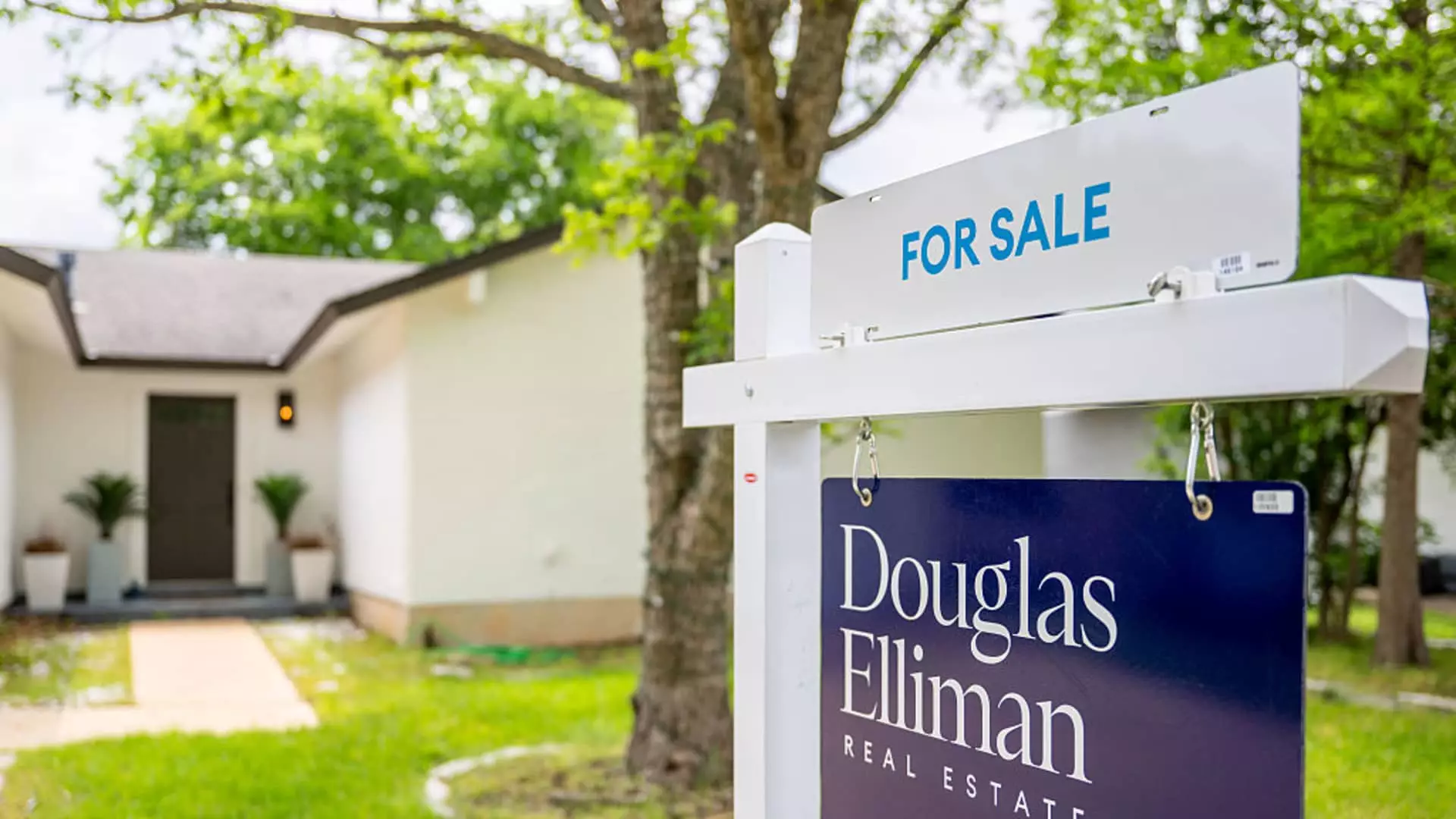In a climate often marked by optimism and predictions of recovery, the housing market is displaying signs of distress that could disrupt not just economic stability but the dreams of many potential homeowners. Recent data from the National Association of Realtors (NAR) revealed an infinitesimal rise of 0.8% in the sales of previously owned homes for May, nudging the total to a seasonally adjusted annualized rate of 4.03 million units. This tepid growth stands in stark contrast to expectations of a 1% decline, shining a spotlight on the fragile state of the market and leaving many to wonder: what happens next?
The incremental upswing masks a broader trend of uncertainty; sales in May were down 0.7% compared to the same month last year, highlighting a persistent stagnation that will undoubtedly leave a bitter taste in the mouths of hopeful buyers. In a country where homeownership is often viewed as a symbol of success, these statistics exhibit more than mere numbers—they encapsulate the struggles faced by individuals desperate to secure their own piece of the American dream.
Regional Disparities: A Tale of Two Markets
As with most markets, the real estate sector is not monolithic. The results unveil stark disparities across regions—sales in the Northeast surged by 4.2% month-to-month, while the West, a region plagued by exorbitant prices, suffered a steep decline of 5.4%. The West’s vulnerabilities aren’t simply numbers on a page; they reflect the broader issue of affordability that has disproportionately affected potential buyers. Record-high prices paired with languishing incomes and climbing mortgage rates signify an unsettling paradox.
The prevailing sentiment is that residents on the coasts are increasingly becoming casualties of a housing market that seems to favor the wealthy. As prices continue to climb, no significant end appears in sight for those who aspire to own homes in these regions. The unhindered demand in the Northeast juxtaposed against the declining sales in the more expensive West is a microcosm of the struggles within the nationwide housing crisis.
The Mortgage Quandary: Rates Deter Buyers
One of the fundamental challenges plaguing the housing market is the relentless rise in mortgage rates. The 30-year fixed mortgage rate holding steady in March and swiftly breaching the 7% threshold in April reflects a broader trend of increasing costs that weigh heavily on buyers’ decisions. According to NAR’s chief economist Lawrence Yun, this persistent increase in rates significantly dampens the enthusiasm of both buyers and sellers, creating a standoff in the market. His assertion that a decrease in mortgage rates could revitalize the housing market is a poignant reminder of how interconnected and delicate the system truly is.
This cyclical vulnerability suggests that potential buyers remain trapped in a cyclical quandary—sky-high rates discourage entry into the market, yet without an influx of new buyers, the supply remains stagnant, perpetuating the cycle of high prices and limited accessibility. The question looms: how can we reclaim homeownership as achievable for all?
Market Trends: Peripheral Indicators of Hope?
Despite the grim statistics, some areas show potential green shoots worth examining. The surge in supply—over 20% more homes available compared to last year—sparked a slight bump in sales, yet it is essential to consider whether this increase can truly offset the discouragement caused by high prices and escalating interest rates. The current market boasts 1.54 million available units, translating to a 4.6-month supply—historically lean, yet still insufficient to balance affordability and demand.
The bolstering of homes sold above list price, jumping to 28% from last month’s 18%, also indicates an undercurrent of demand amidst the chaos. However, the troubling fact that fewer first-time buyers could break into the market—30% down from 31% last year—speaks volumes about the systemic challenges that must be surmounted for the dream of homeownership to thrive once more.
The current state of the housing market can only be characterized as precarious. Underlying economic pressures have led to diminished sales, rising interest rates, and an ever-widening gap in accessibility to homeownership. With hopeful glimmers of supply growth and a slight rise in sales above list prices, optimism is hesitant at best. It is crucial for policymakers to take note of these trends and respond proactively to ensure that the American dream of homeownership remains attainable for generations to come.

